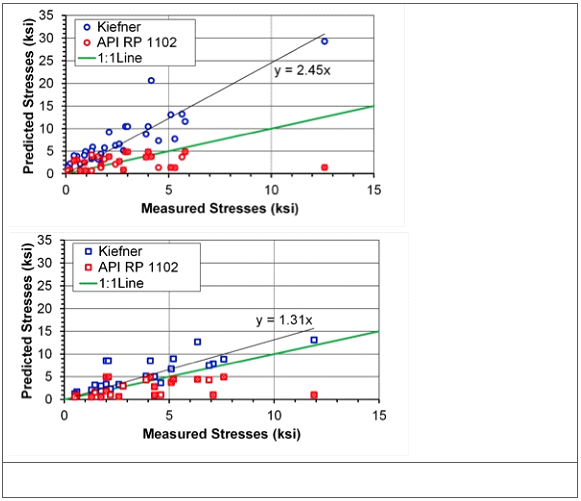Understanding Surface Loading, Encroachment, and Buried Pipe Stress: A Comprehensive Approach

Background
Burden of Buried Pipes: Every submerged pipeline faces the constant pressure of the soil that engulfs it. When these pipelines traverse areas like railroads, roads, and construction sites, they endure additional loading from surface vehicles, including substantial construction machinery. Such surface pressures induce wall bending in these pipes, culminating in hoop and longitudinal stresses. Renowned industry standards, including ASME B31.4 and B31.8, dictate these stresses, ensuring they remain within prescribed safety thresholds.
API RP 1102
A Critique: The API RP 1102 remains a quintessential methodology to evaluate stress in buried pipes across highways or railroads. However, it presents multiple challenges:
- Historical Limitations: Cornell University originated this standard in the early 1990s. Its basis lies in finite element analysis (FEA) and specific tests. These tests predominantly cater to bored-installed pipes, possibly making the standard less conservative for traditionally trench-installed pipes.
- Parameter Constraints: The RP’s dependency on limited FEA data introduces constraints on parameters such as burial depth and pipe diameter, rendering the standard inapplicable to specific pipelines.
- Limited Application Scope: Its framework is exclusively designed for pipes traversing highways and railroads, disregarding other potential scenarios.
Kiefner's Enhanced Approach
Recognizing the limitations of API RP 1102, Kiefner has meticulously crafted an innovative technique to decipher the stress in buried pipes under different external loadings. Our methodology outperforms the current API RP 1102 on various fronts:
- Broad Application: Kiefner’s approach is comprehensive and suitable for construction sites, parking lots, agricultural landscapes, or transitory heavy equipment crossings.
- Universal Analysis: Every external load, from vehicles to bulky machinery, is delineated by transposing its weight onto a systematic grid of loading points within its footprint. The resultant pressure on the pipe is then evaluated by aggregating pressures emanating from individual loading points.
- Flexibility: Our technique is adaptable and precise regardless of the vehicle’s position or orientation regarding the pipeline.
Comparative Analysis: Kiefner’s approach stands out in contrast to API RP 1102. We’ve benchmarked the performance of both methodologies using experimental data from diverse research groups. Our method consistently offers conservative stress predictions, ensuring enhanced safety margins. Conversely, API RP 1102 occasionally presents contrary trends.
Conclusion: In an age where infrastructure integrity is paramount, Kiefner’s advanced approach for buried pipe stress assessment offers operators a more precise, flexible, and universally applicable solution, ensuring pipelines remain safe and robust for years.

